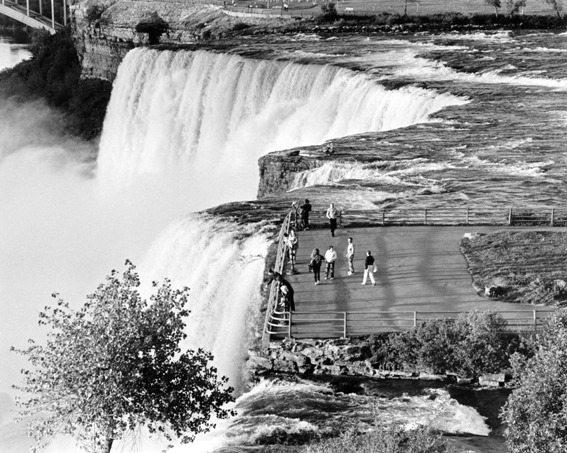
AP Photo/McElroy Sil
A tourist attraction falls into decline. Grand urban renewal schemes fail to deliver. Residents talk about mafia infiltration, corruption and random arson.
What might sound like a lost Raymond Chandler novel is actually our latest Notable Narrative, “The Fall of Niagara Falls,” which ran last week in Bloomberg Businessweek. Andrew Rice takes a story that could have been as dry as the desert – think yet another American city that has lost its manufacturing base, its downtown, and much of its hope for the future – and he makes things pop.
Here’s the lede:
On a misty night in late October, a stringy-haired newspaperman bellied up to the bar at Frankie G’s, a musty dive in Niagara Falls, the decrepit city in western New York State that sits atop one of the natural wonders of the world. The editor, Mike Hudson, slapped down some cash and ordered a round of Labatt’s for the house, which consisted of five people, including the proprietor. Hudson, the founder of the weekly tabloid Niagara Falls Reporter, freely refers to his town as “a godforsaken place,” and it was hard to argue with the assessment in the neighborhood surrounding the bar. The area is the worst the city has to offer, a place of drugs and crime and boarded-up brick houses.
Hudson knocked back a shot of Sambuca and rummaged around for his cigarettes, shouting epithets and contributing jokes to a running discussion on local politics. “It’s been all downhill in this town since 1969,” said one of the other patrons, a ruddy-faced man who had his first name, Fred, sewn onto his windbreaker. “Ever since they knocked down the whole goddam downtown,” muttered the bartender, Frankie G. (short for Giaquinto).
Rice adds tension to his story early, contrasting the town’s distress with the thriving Canadian side of the falls. While it’s his lede and stellar kicker that most impress, in the middle, Rice moves from the past to the present, using a tour of the town and then an actual group of tourists to give himself a narrative scaffolding to draw readers through the piece.
The article doesn’t lay blame at any single person’s feet, but brings in a series of characters from the town to chronicle its missteps. As we hear about the Manhattan lawyer, the many mayors and the developers, we drop deeper into the hole in which Niagara Falls finds itself today. And if the blight starts to feel endemic or somehow inevitable, there’s always the city on the other side of the falls that shows it didn’t have to be this way.


